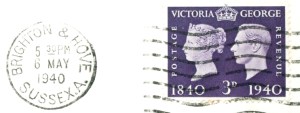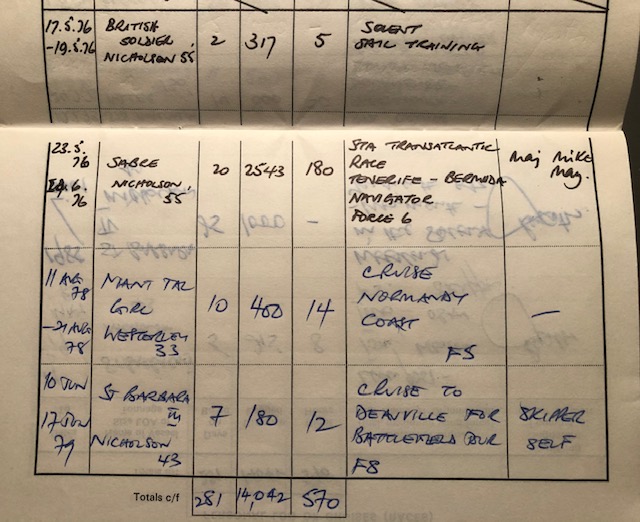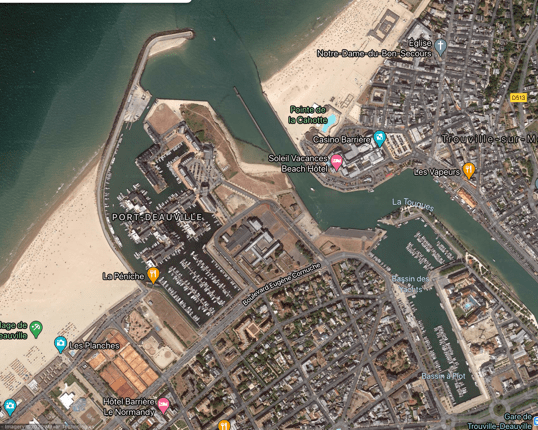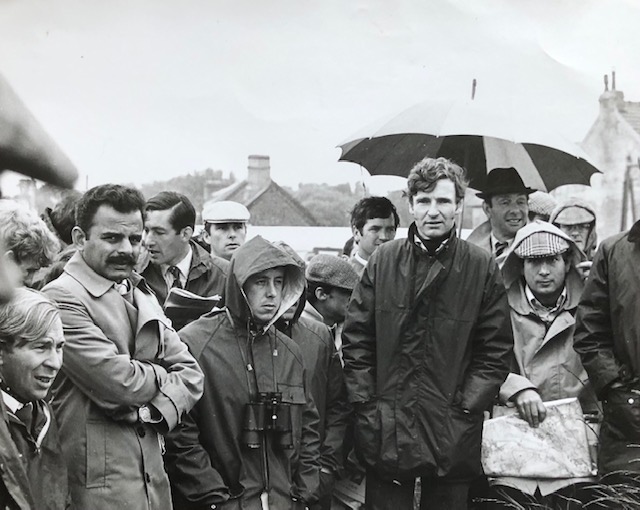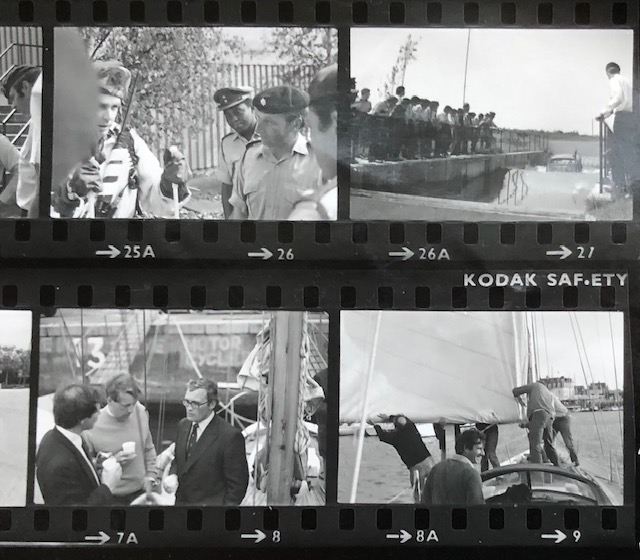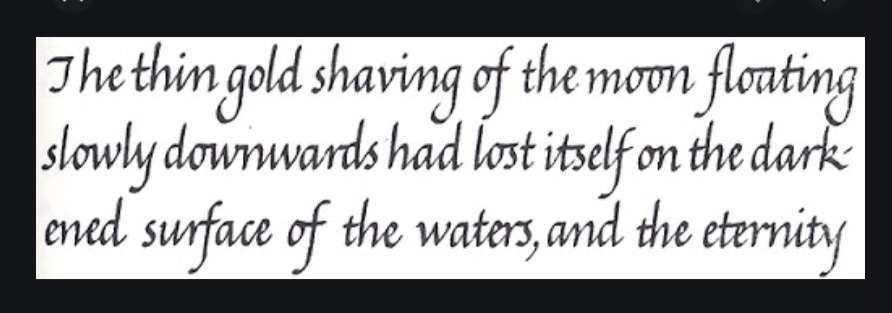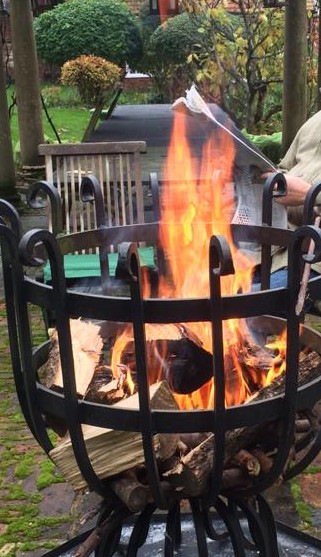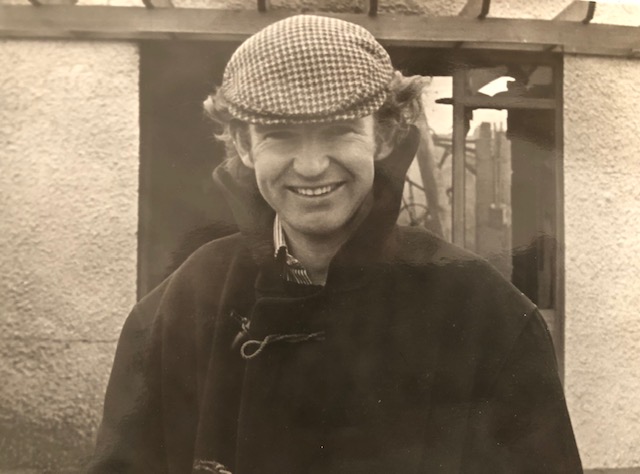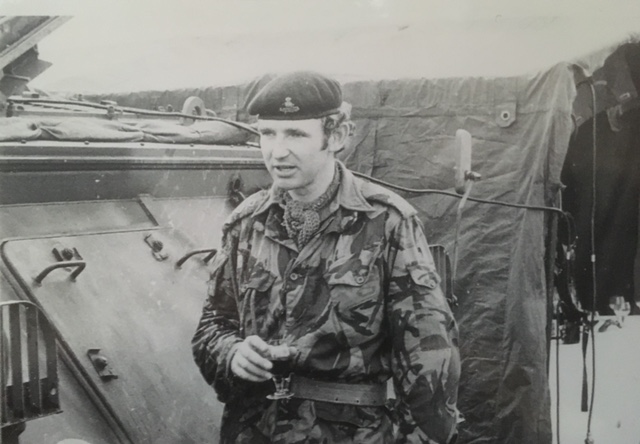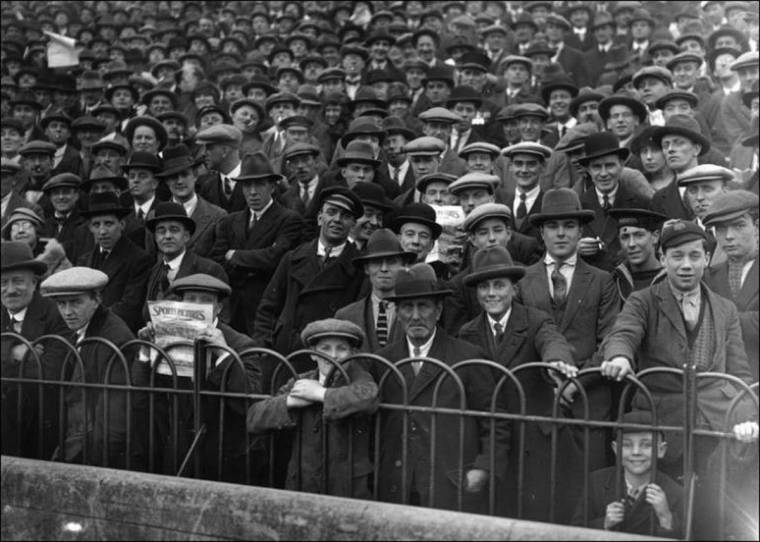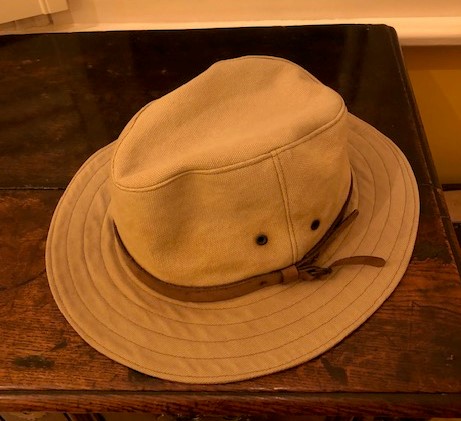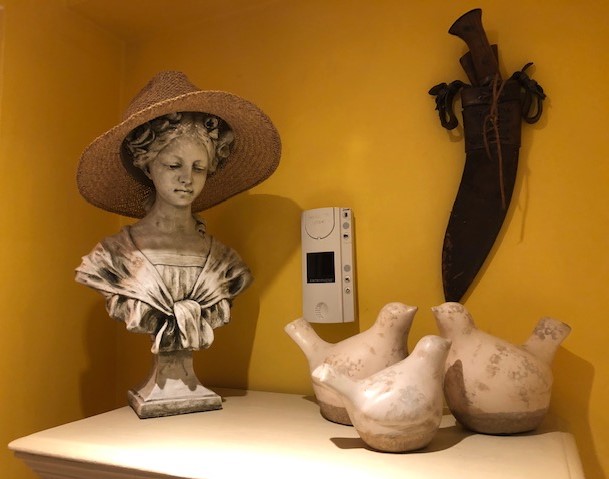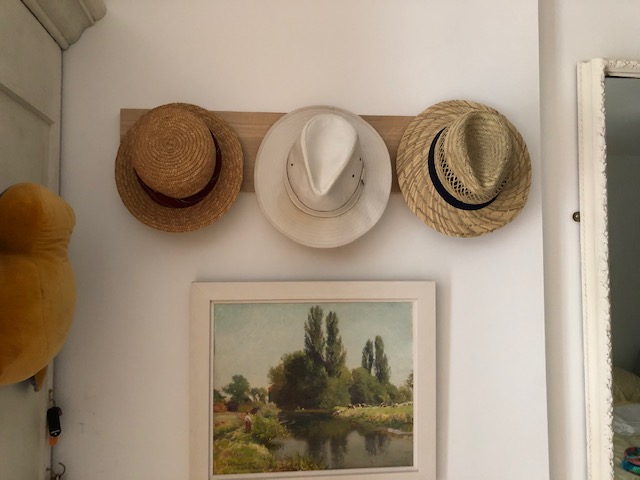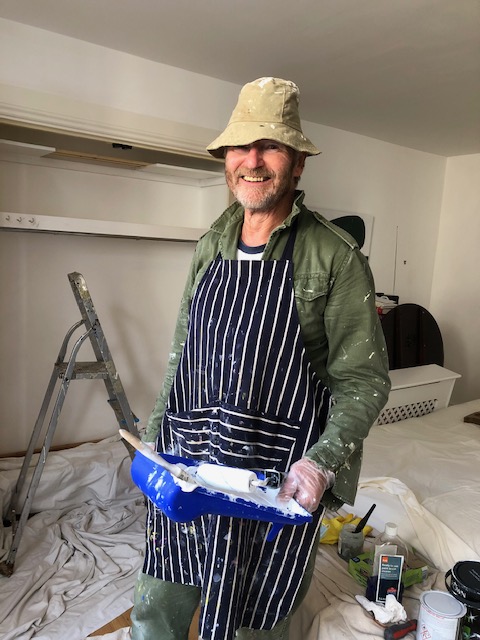If you are a regular reader of my scribbles. you may have been expecting to read whether we sorted out the ingress of sea water into St Barbara III or took to the life raft! However today is Christmas Day (Note 1) …… for Christians of course ……. I know many for whom this particular day doesn’t have any meaning ….. but the United Kingdom is essentially a Christian country, with an established church.
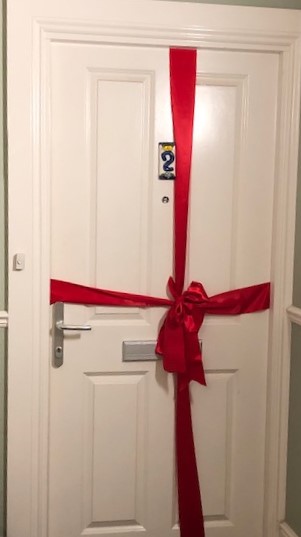
Our front door decoration
I wrote about Christmas in PC 27, way back in December 2014 when I wasn’t thinking I was going to write a ‘blog’. Rereading it now I find it covered my own Christmas experiences and the Irish comedian Dave Allen’s take on it. I returned to the festive theme in PC 86 in 2016, scribbling about a particularly British tradition – ‘Boxing Day’. My PC 113, ‘Extra! Extra!’ had an imagined conversation between Santa Claus and his wife, Mrs Claus (?)

‘Uncle Tommy’ a papier-mâché Father Christmas from 1963
My ‘Creative Writing’ evening class at Brighton Met was encouraging and I even liked a few things that came from the challenging homework. 2018’s PC 140 was another ‘Extra! Extra!’; it covered a couple of homework scripts, one Christmas-themed about carol writing. Facebook asked whether I wanted to repost this last one earlier this week, so you may have already seen it.
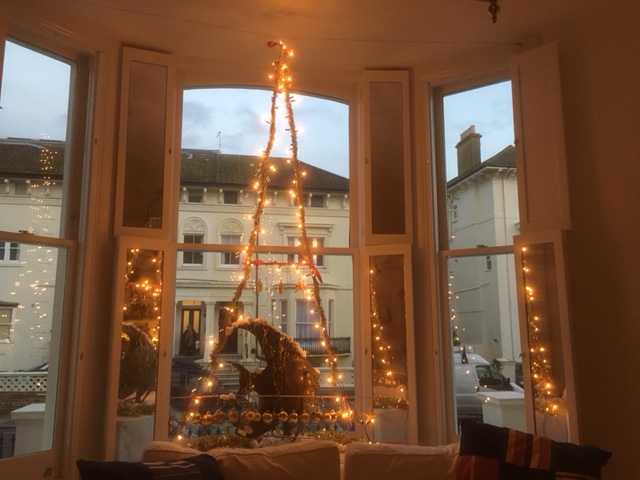
Our 2018 Christmas lights
In Christmases past I have had proper Christmas trees and some have survived with more than 50% of their needles intact until Twelfth Night, when we traditionally take down the decorations. In fact I was always told it was bad luck to remove your Christmas decorations before the appointed hour. You might remember those trees that were shedding their pine needles as you wrestled it from the car, before you put it inside in the warmth; you were lucky it made it to Boxing Day. I have always resisted the artificial ones preferring to carry on the Victorian Christmas tradition. The breeders of trees have been successful in making some varieties more robust.
Growing up, the choice of Christmas tree lights were very much class-driven! ‘White is best’ and then some coloured bulbs were allowed, providing they didn’t flash. Out and about the domestic displays have became competitive!

I spent one Christmas in Kitzbuhel in Austria. The tree was about 2 metres tall and decorated with lots of red ribbon and real candles! Yes! Real candles that you could light. And we did and there is nothing like the soft glow of candle light – until one night the draft from an open window blew a flame onto a by-now-dry branch and the tree very quickly was aflame ……. the biblical connection of a burning bush comes to mind ……. not consumed but simply burning as God seemingly spoke to Moses! Well in this case the Christmas tree very quickly ended up on the balcony being doused with water!!

Rummaging around in the dusty cardboard box here, I detected the wires of the Christmas lights in one old supermarket plastic bag and gently pulled it out. Time for the baubles, bangles and beads ….. and tinsel later. But first I had to check that the lights are working.
One set OK! Second set? Nothing! This particular set comprised 40 white lights, simple, effective and classy. The manufacturers had thoughtfully provided a few spare bulbs and a little green plastic tool to extract the individual defunct bulbs, But which one out of the 40? In the old days the bulbs would have had a screw fitting and were often loose, so the IA (Immediate Action – an old military expression particularly relating to small arms handling) was to check the tightness of the individual bulbs. These little plastic-housed bulbs were just pushed in, the bulbs themselves too thick to see whether the wire had broken. Pulling one out showed a little copper wire on each side, making contact with connectors deep inside. I pulled them all out, discarding ones which looked dodgy ……. finding new ones …… and replaced them all in their little housing. Expectantly I plugged them back in and switched the circuit on. Nothing! OK! Replaced the plug’s fuse. Nothing! …… Amazon delivered another set during our ‘Prime’ trial and the result – fashioned into a heart shape with Uncle Tommy flying around in the middle – does the business I think.
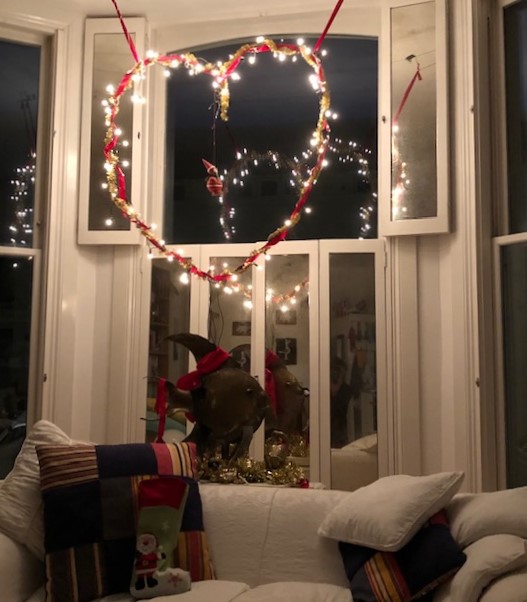
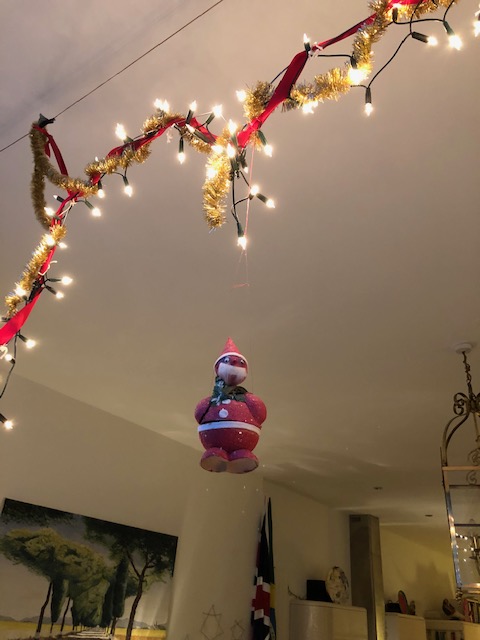
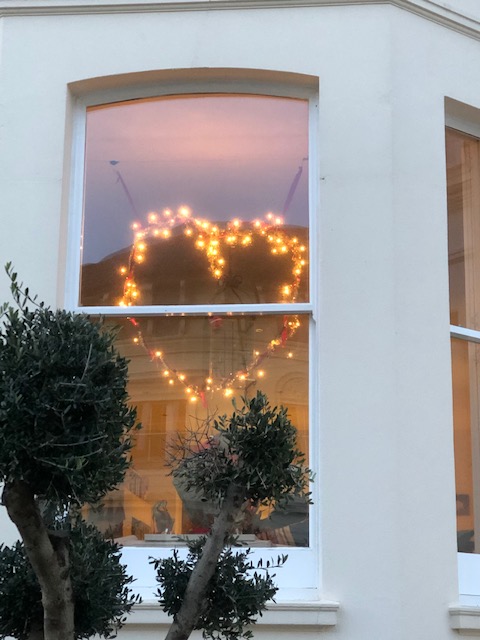
At this time of year there are many biblical reminders, if only through the festive carols which have been broadcast on the various radio stations since the beginning of the month. We all have our favourites, each bringing back memories of special occasions. And the Christian bible is littered with stories of pestilence and plague, be it an invasion of locust which this year has been particularly troublesome in Africa ……. or famine ……. or pandemics. Those interested in our Nation’s story will recall the 1665 Great Plague of London; by the time a fire in a bakery in Pudding Lane started an inferno which destroyed most of the city in the following year and killed off the Yersina Pestic bacteria in the process, some 70,000 had died (Note 2). In the C14th in Europe the Black Death ravaged communities over 7 years.
So with all the sad and negative aspects of the last few days of 2020 maybe making us feel gloomy and doomy, we should all ponder on the recent alignment of the planets Jupiter and Saturn. It’s not impossible that the Star of Bethlehem was another instance of this bright sight in the night sky.
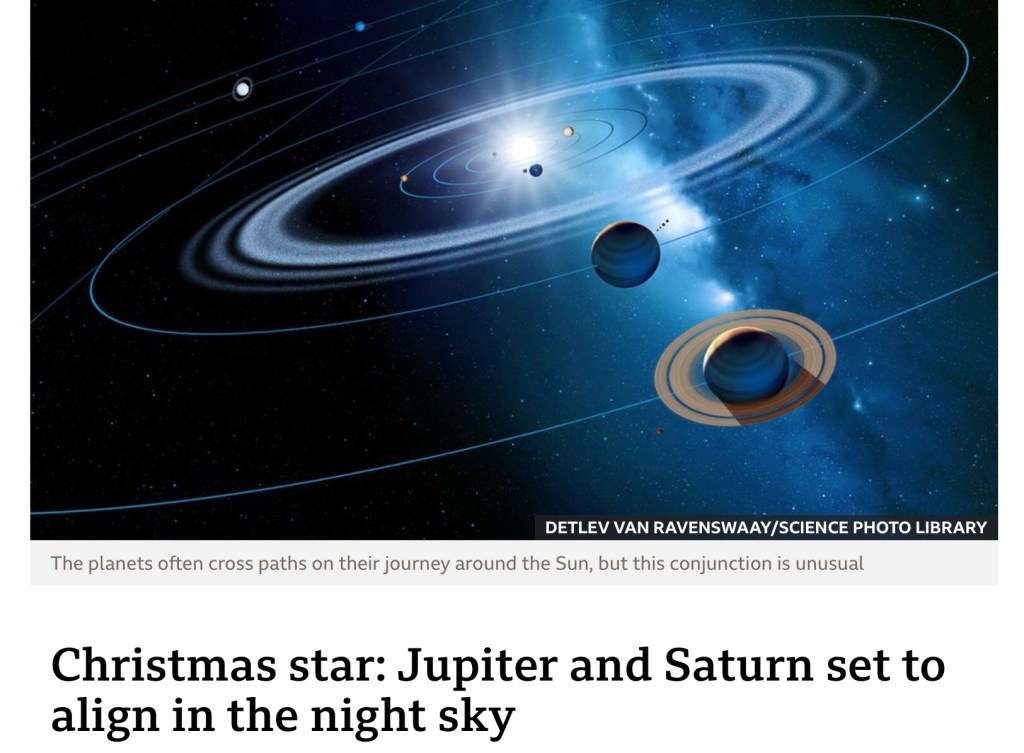
Richard Christmas Day 2020
Note 1 There is little evidence Jesus was born on 25th December. The earliest mention of this day was AD 354. Early Christians preferred January 6th, nine months after the Passover; for Coptic Christians this year (or next!), their ‘Day’ is 7th January 2021. In the original Julian calendar 25th December was the Winter Solstice, the date of which moved to 21st December with the introduction of the Gregorian calendar. “Here endeth the lesson!”
Note 2 The population of London was about 460,000 at the time. (Compare with today’s 9 million.

PS A Jamie Oliver retro Christmas trifle I made some years ago
